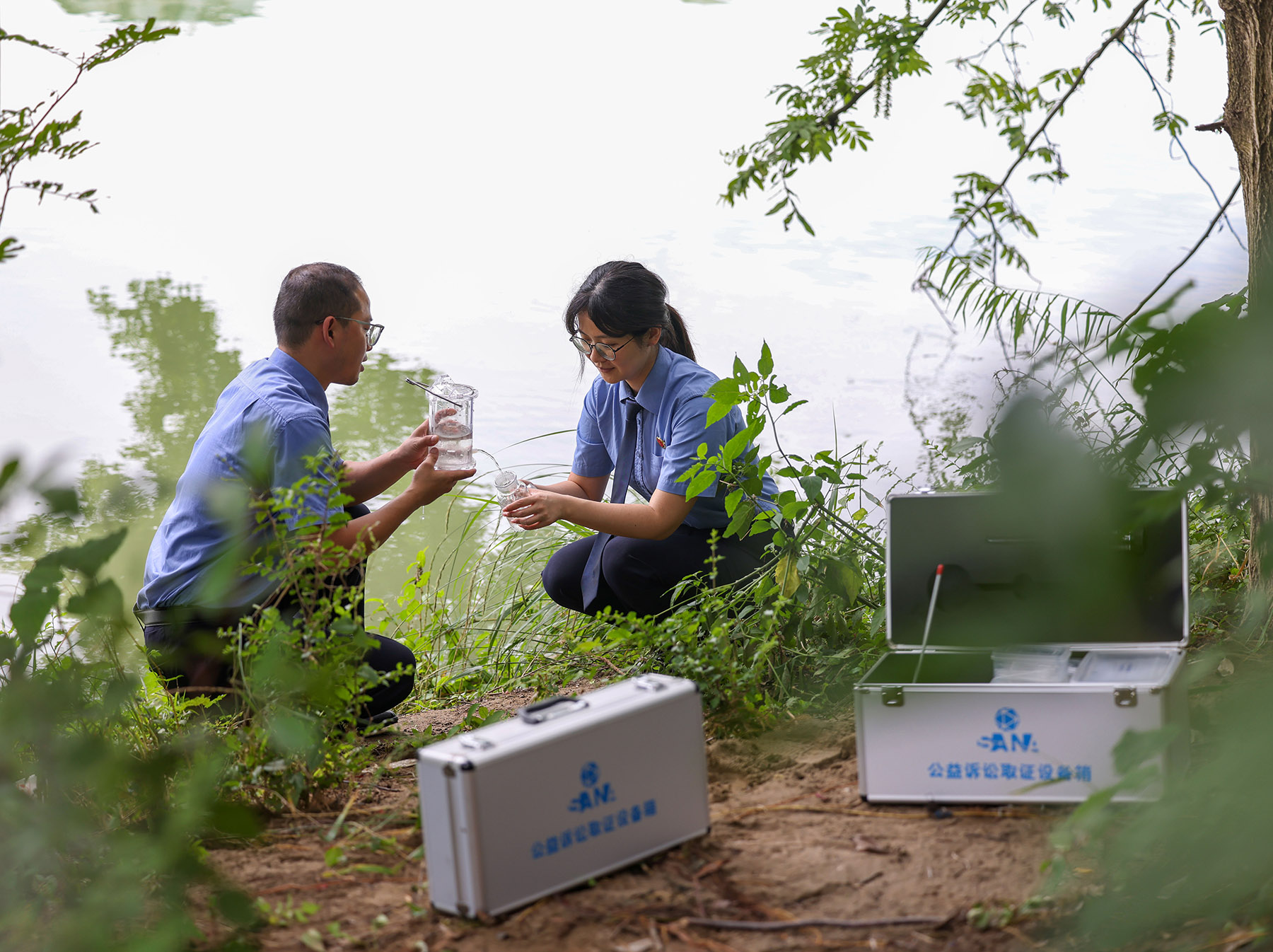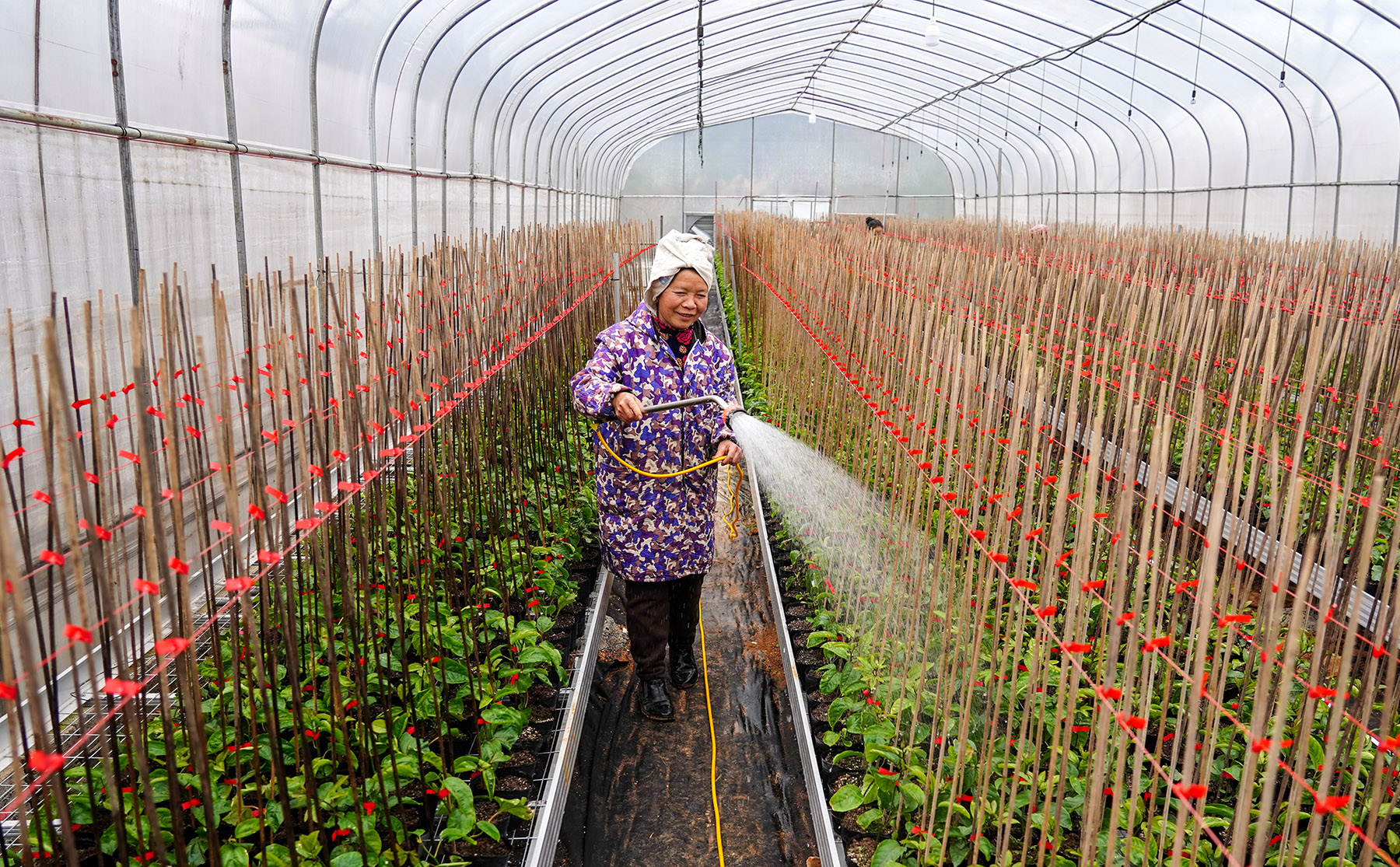Guizhou sets about conserving and utilizing valuable resource before it slips underground

Editor's note: As protection of the planet's flora, fauna and resources becomes increasingly important, China Daily is publishing a series of stories to illustrate the country's commitment to safeguarding the natural world.
Despite receiving substantial rainfall, surface water in Southwest China's Guizhou province is scarce. That's because of the province's unique karst limestone landscape, which means as soon as the rain lands, it seeps through the soluble bedrock into the many caves and underground rivers.
This problem is particularly pronounced in Guizhou's rural areas, and so authorities have prioritized large-scale water conservation projects, including building infrastructure and ecological restoration, to improve the environment as well as the livelihoods of locals.
In the village of Cuiwei in Longli county, the rocky mountains have been transformed into valuable assets thanks to a small watershed soil conservation project.
READ MORE: Conservation protects fish stocks in Guangxi
Chen Yingxuan, a staff member at the soil and water conservation station of the Longli county water resources bureau, has been involved with the project since its inception.
"The hill slopes were unsuitable for agriculture, and rain would wash the soil into rivers, worsening siltation and pollution downstream," Chen said.
In 2022, the county piloted an eco-friendly soil conservation project that adopts an integrated approach to the management, maintenance and utilization of mountains.

"Unlike traditional methods that focus solely on controlling soil erosion, this project emphasizes the coordination of soil and water resource protection, and the improvement of residents' living conditions and income," Chen said.
Aligned with general rural vitalization efforts, the project has attracted agricultural companies that have so far planted 34 hectares of economic forests, including honey plums and apples, which are specialties in Guizhou. This practice has addressed slope erosion, protected arable land and led to the planting of over 347 hectares of water conservation forests.
Xie Daojiao, chairman of Longli Shengqi Agricultural Technology Co, said his company has leased land from the village to grow apples, yellow peaches and honey plums.
"During the first three years of seedling growth, I'm responsible for my own profits and losses," Xie said. "Starting from the fourth year, after the trees begin to bear fruit, I will give annual dividends to the village. We also hire villagers for labor, providing them with wages."
Since the project's inception, the soil erosion control rate in the local watersheds has reached 87 percent, which is considered a very high benchmark, according to the Longli county water resources bureau.
Over the past three years, Longli's forest and grass coverage has increased by 3.14 percentage points. The project has also generated an annual economic benefit of 6.06 million yuan ($853,000), with a net profit exceeding 1 million yuan, significantly boosting local incomes.

Efficient irrigation
In the Xiaolong irrigation area of Huishui county, the local water authorities have significantly enhanced irrigation and drainage capabilities through renovation projects, transforming outdated, deteriorating facilities into a modern irrigation system characterized by water-saving measures, ecological management and smart technology.
Large and medium-sized irrigation areas are vital for grain production and food security.
Since its establishment in 1941, the Xiaolong irrigation area had been plagued by severe issues such as channel leakage, siltation and poor water flow. These problems were compounded by incomplete infrastructure, making it challenging to meet local agricultural needs.
In 2024, to address these issues, prefecture-level authorities actively sought national debt funding support for renovation and water-saving projects in the irrigation area, said Shi Bo, a staff member at Huishui county's water resources bureau.
"The project started in March last year and the renovations are estimated to restore and improve irrigation over 4,280 hectares, increase water-saving capacity by 6.4 million cubic meters, and boost grain production by 770,000 kilograms," Shi said.
The project covers 3,800 hectares of high-standard farmland with an 88 percent coverage rate, effectively ensuring food security in the region, he added.
The enhanced water resources have already led to benefits downstream.
Huishui County Jiaqi Aquatic Products Breeding Co, a sturgeon farming company located in the Xiaolong irrigation area, is one such example.
"The water infrastructure here is much improved," said company representative Chen Ke. "The water flowing through the Xiaolong irrigation area is pure, with suitable temperatures and ample supply year-round, making it ideal for raising high-quality sturgeon."
The company produces an average of 800 metric tons of sturgeon annually, and breeds over 5 million sturgeon fry, demonstrating the positive impact of improved water management on local aquaculture and agriculture.

Green generation
In another project, the Guanyinyan Hydropower Station, located on the main channel of the Wuyang River in Shibing county, has also benefited. It has set a benchmark in enhancing the utilization of hydropower resources and restoring river ecology with the installation of cutting-edge ecological-flow turbines.
Ecological flow refers to the minimum water flow required to sustain or restore the fundamental structure and function of river ecosystems. Located at the largest reservoir by capacity in Guizhou province, the Guanyinyan Hydropower Station previously released ecological flows directly through the dam's sluice gates or bottom outlets.
However, this approach often resulted in damage to the gates due to prolonged impact, leading to economic losses. Moreover, substantial volumes of water bypassed the turbines, squandering potential electricity generation.
In 2021, an investment of 15 million yuan was made in the station to install a 2,000-kilowatt eco-turbine. This allows for the concurrent generation of electricity while releasing 4.75 cubic meters of ecological flow per second into the river.
ALSO READ: Preserving Yunnan's rare wild plant species
The process involves channeling water through the eco-turbine to generate electricity before it enters the river, thus ensuring both ecological and economic gains. This method has resulted in nearly 20,000 yuan in additional daily revenue compared to the previous system of opening the sluice gates.
Long Guangquan, manager of the Shibing branch of Qianshui electric power company, said the new turbine has made life a lot easier.
"The previous turbines required a flow of 17 cubic meters per second to generate electricity, which was only feasible during the flood season," Long said. "During low-water periods, maintaining ecological flow meant we couldn't continuously store water for power generation, making operations challenging."
With the introduction of the eco-turbines, electricity can be generated through ecological flows, which contributed a production value of 6.02 million yuan in 2023 while maintaining essential ecological flow. The Guanyinyan Hydropower Station has been designated as a "Green Small Hydropower Demonstration Station" by the Ministry of Water Resources.
Contact the writers at xunuo@chinadaily.com.cn


